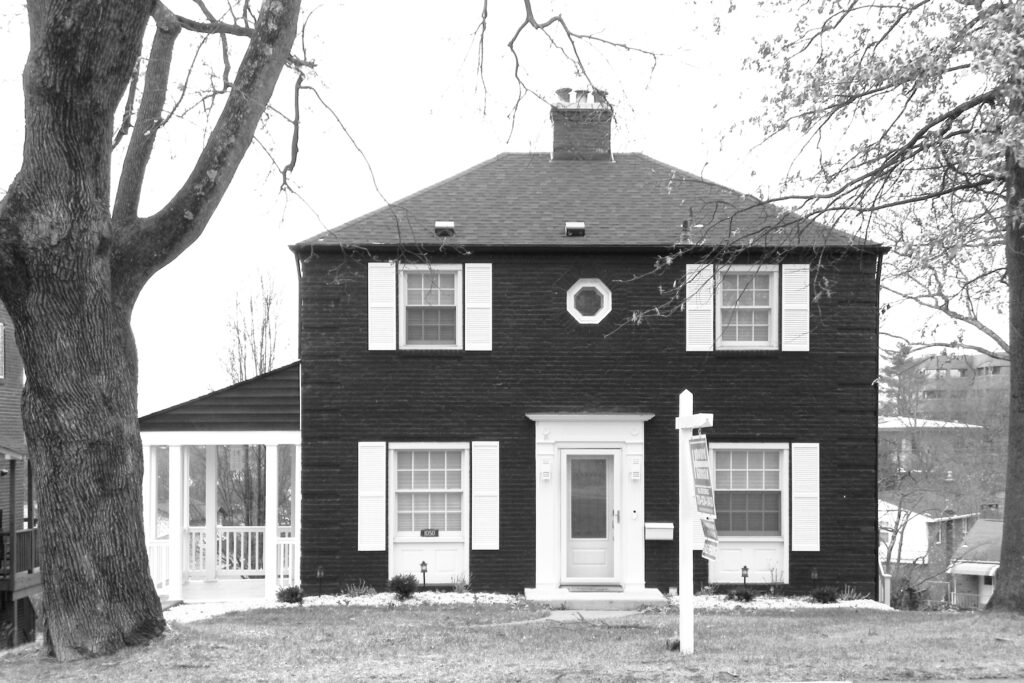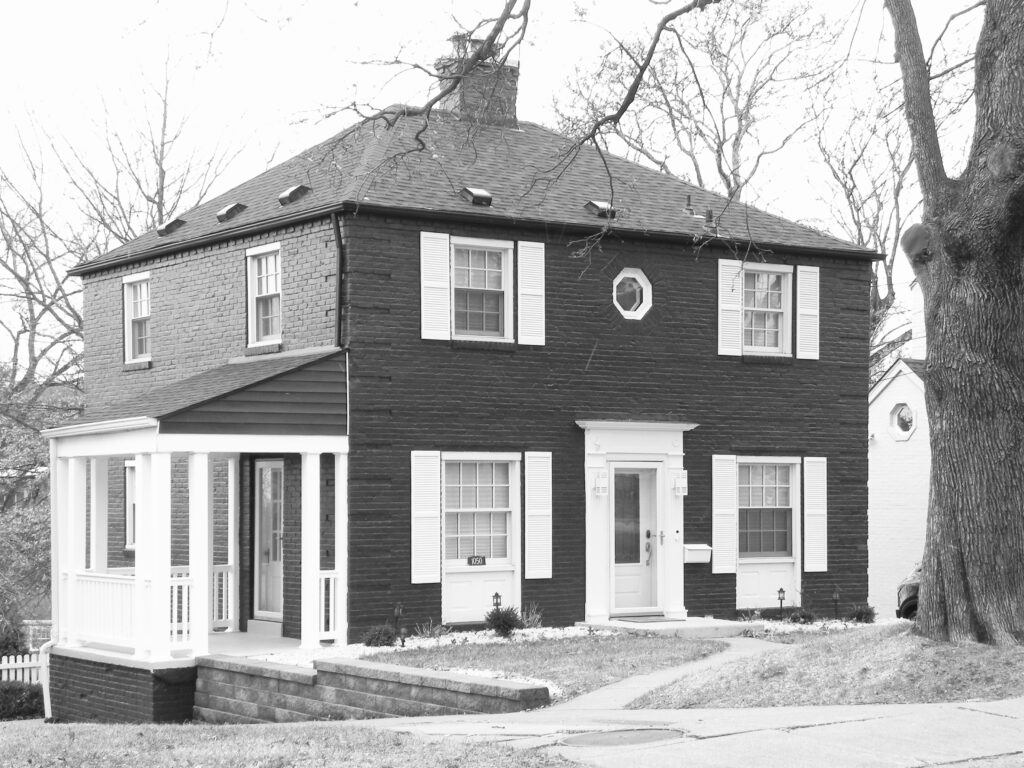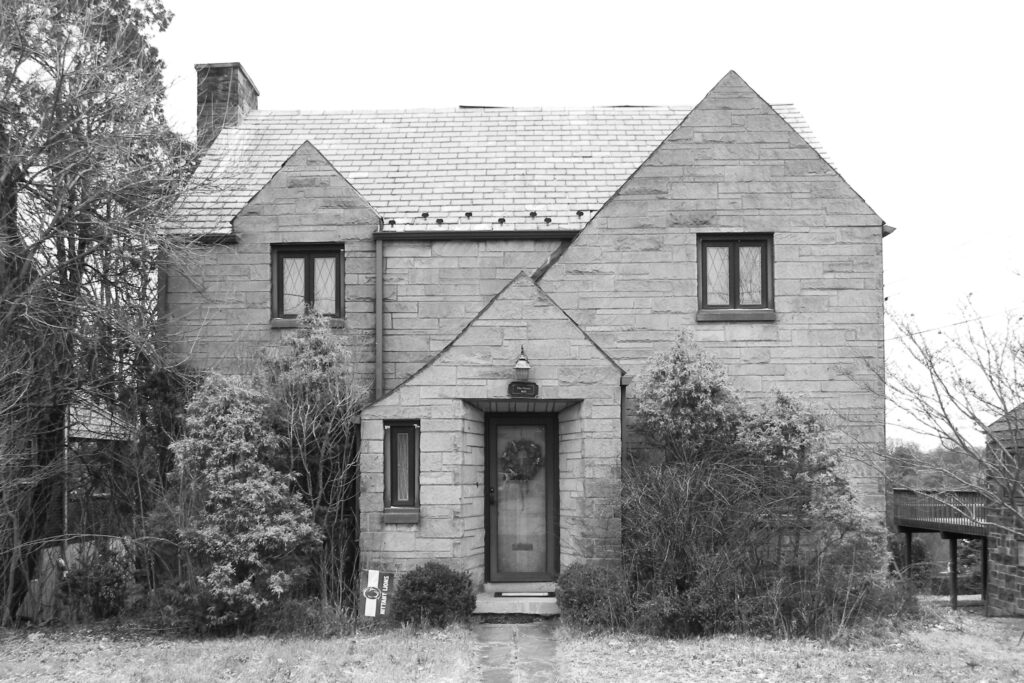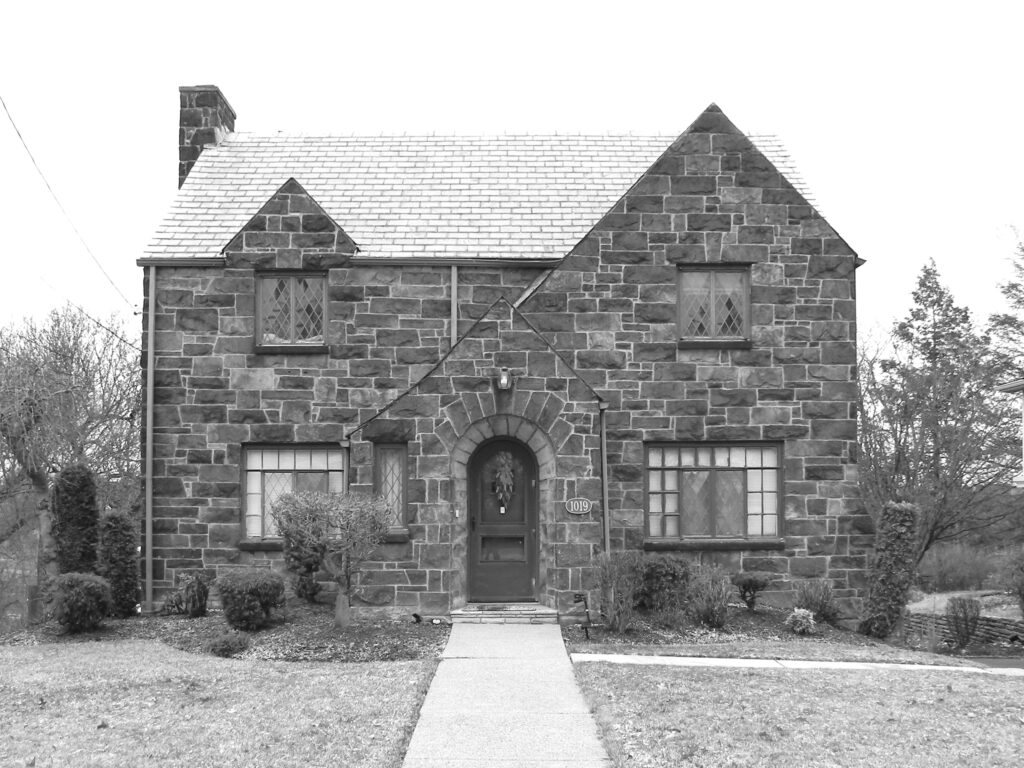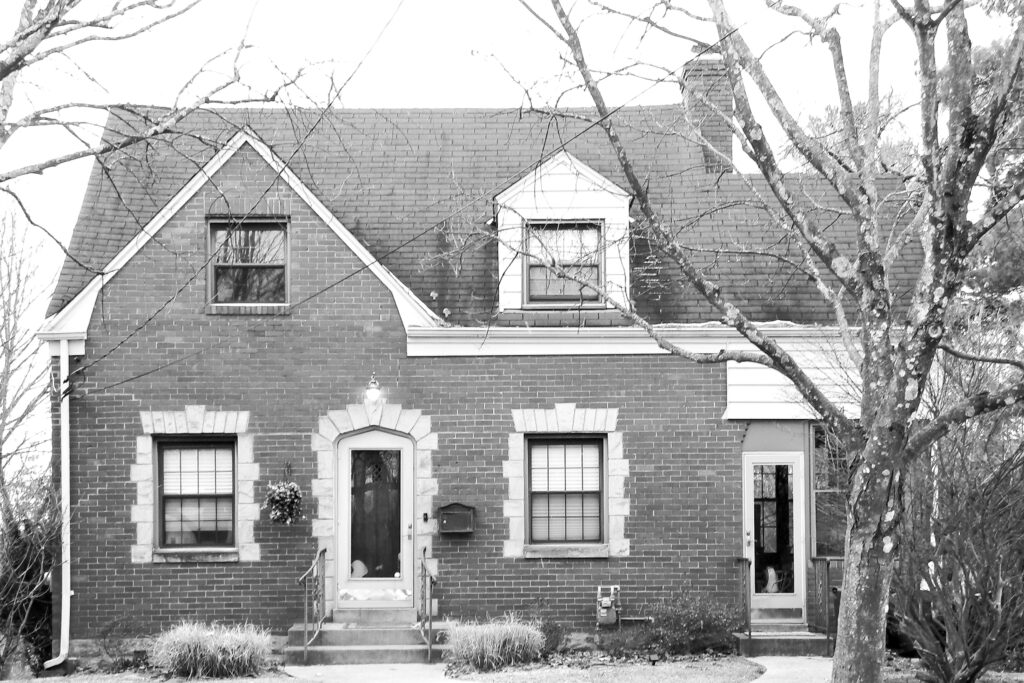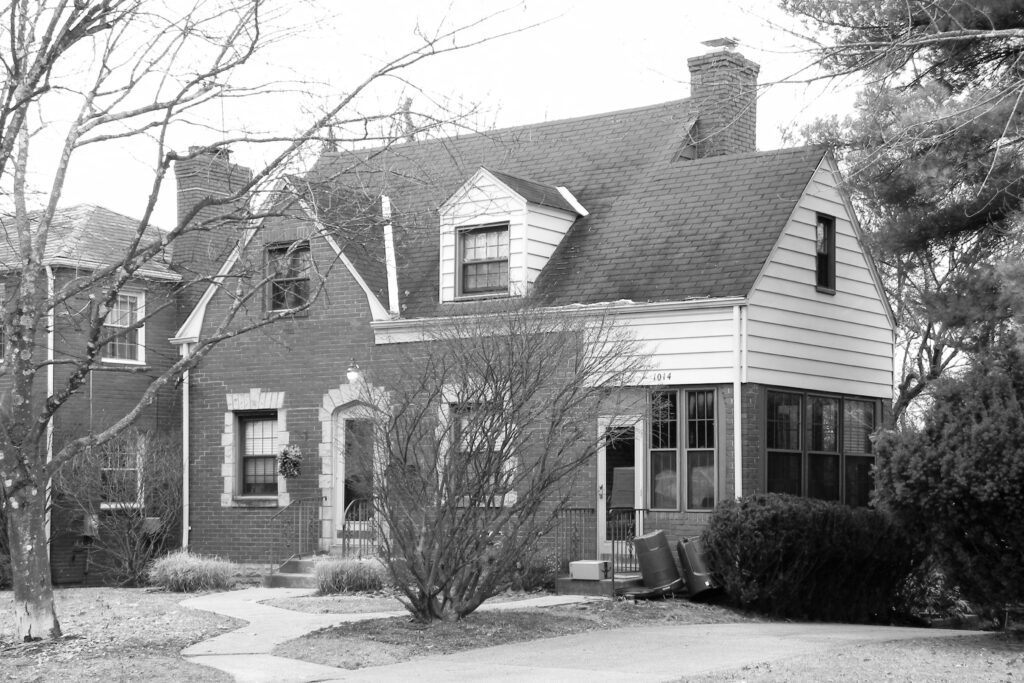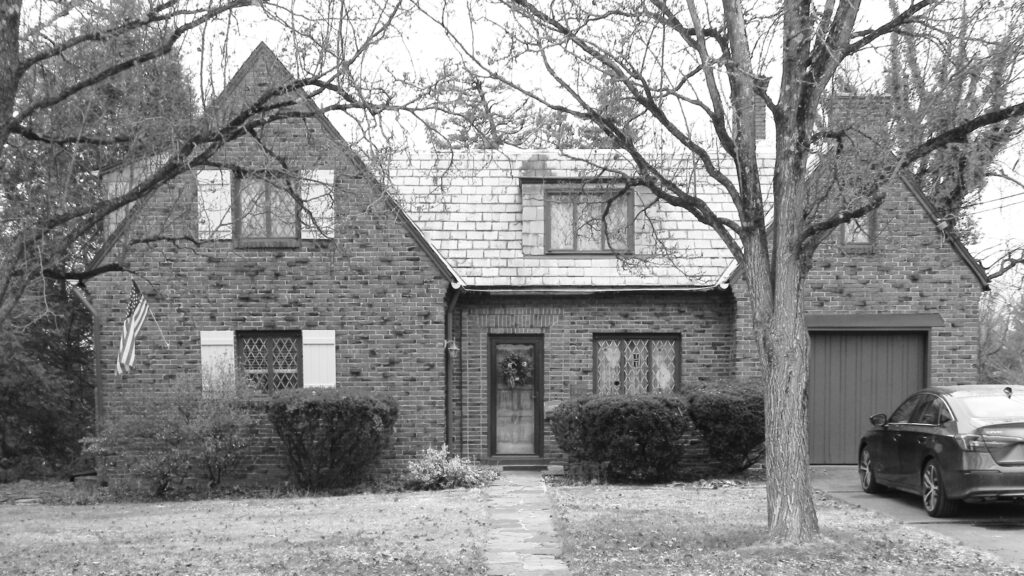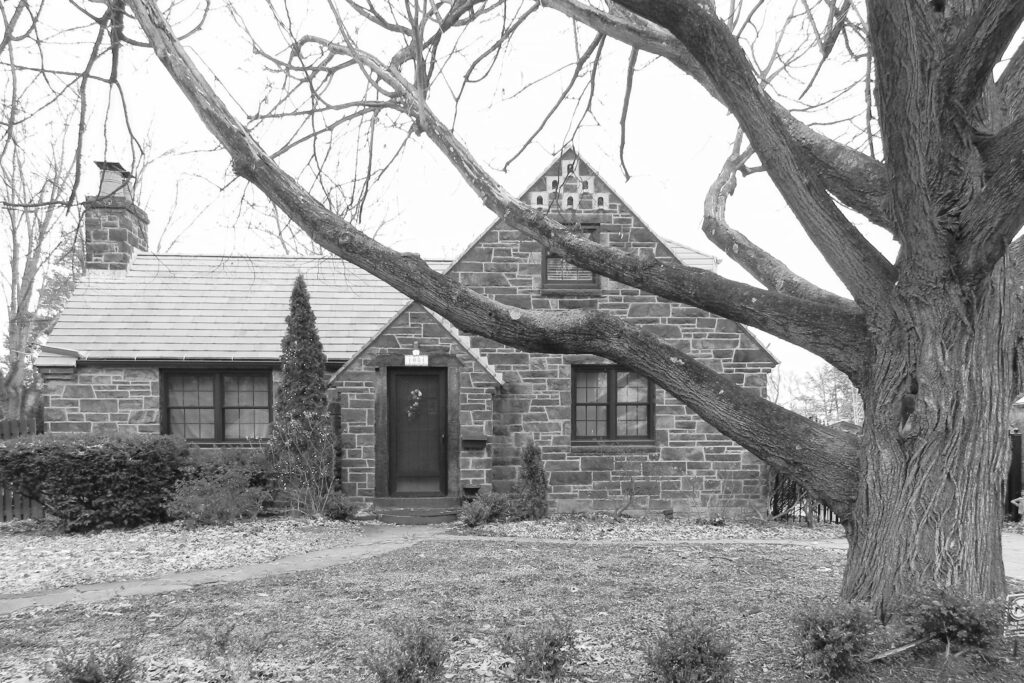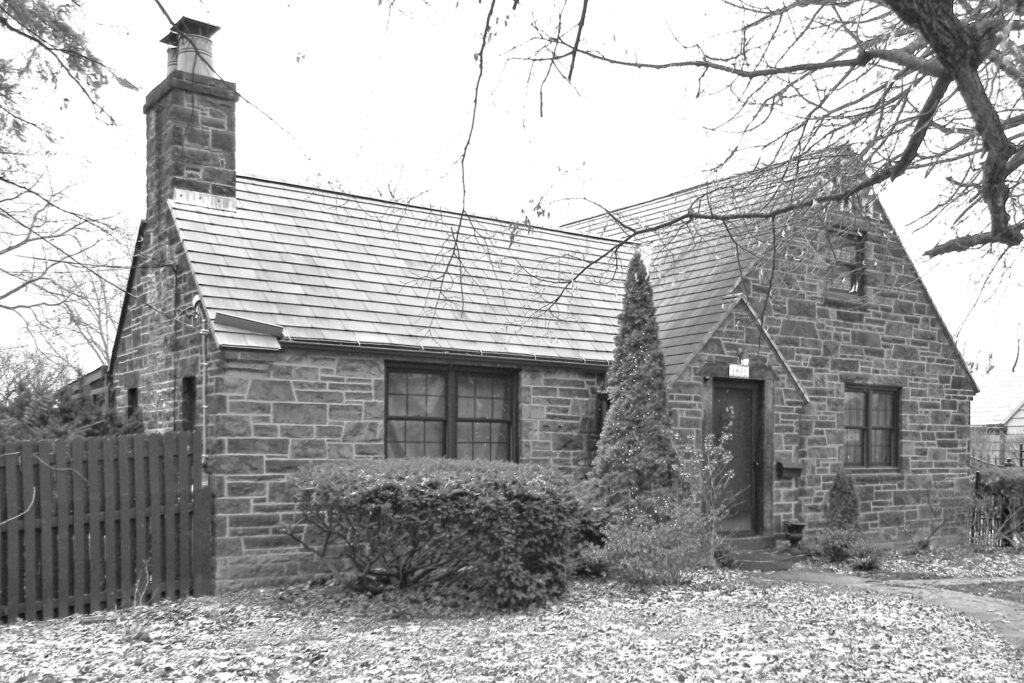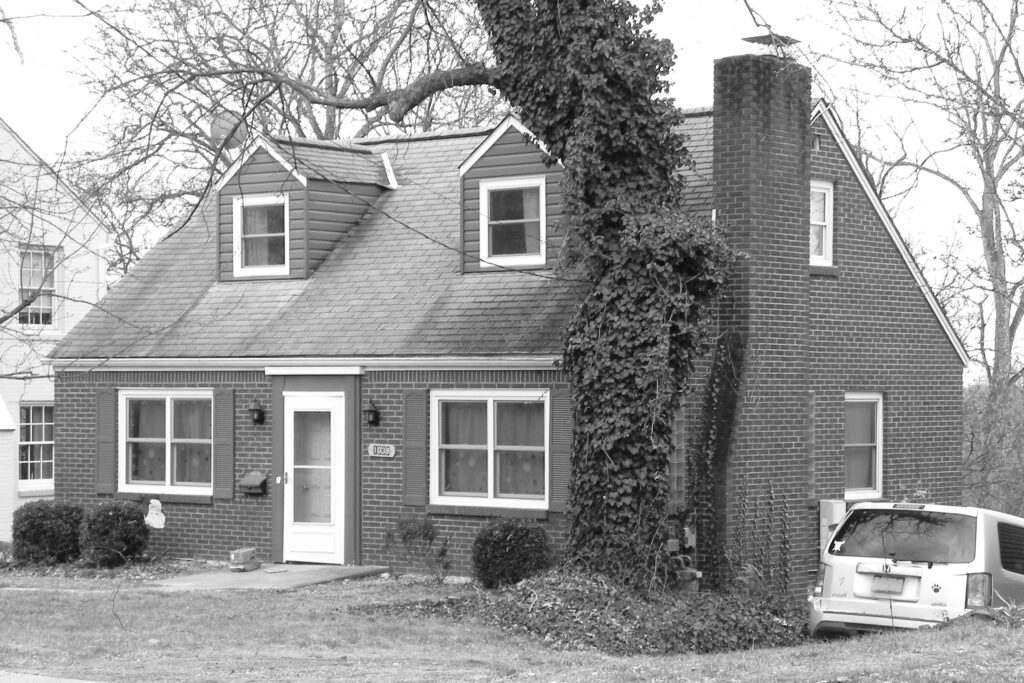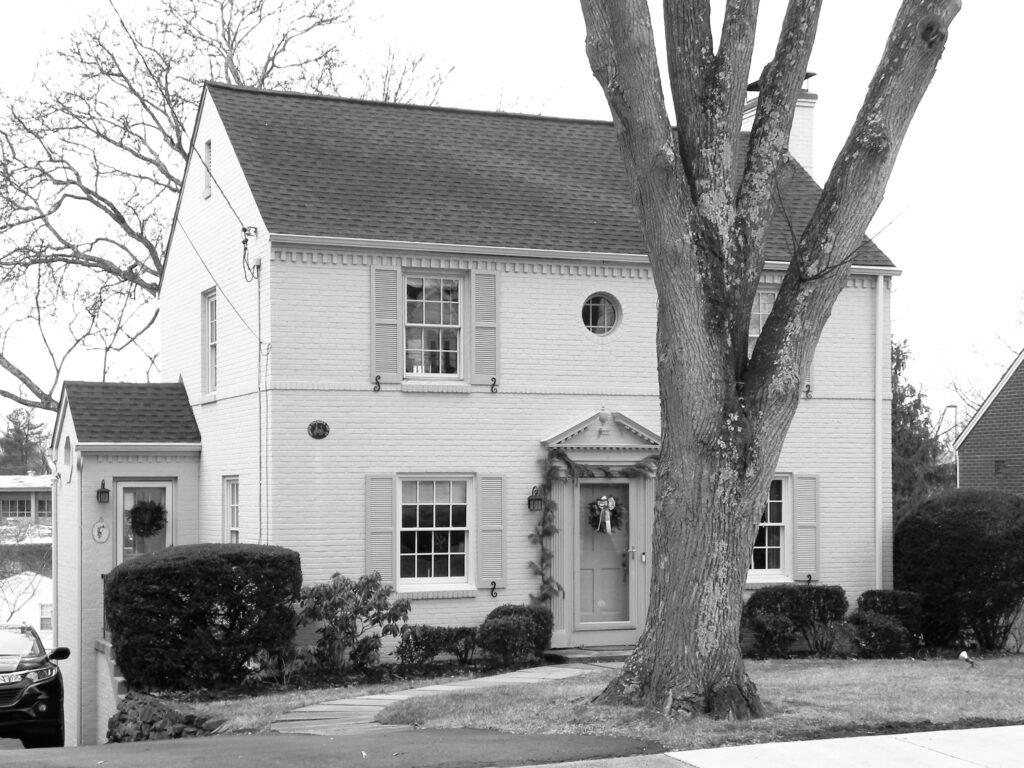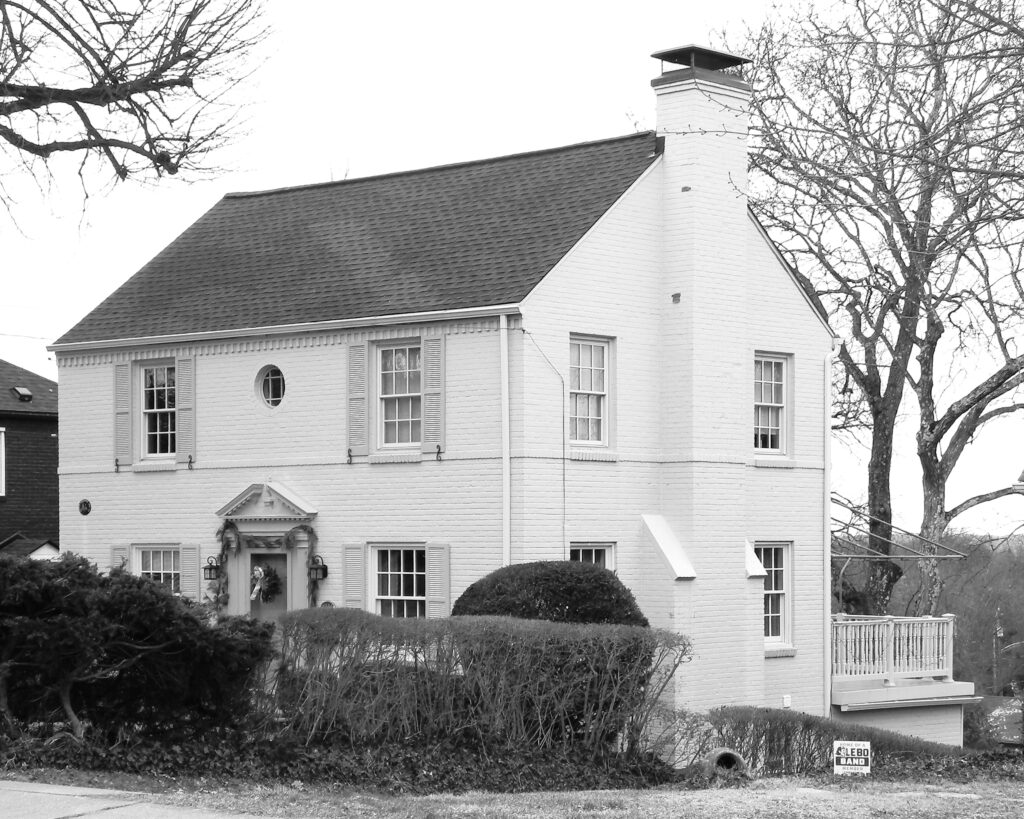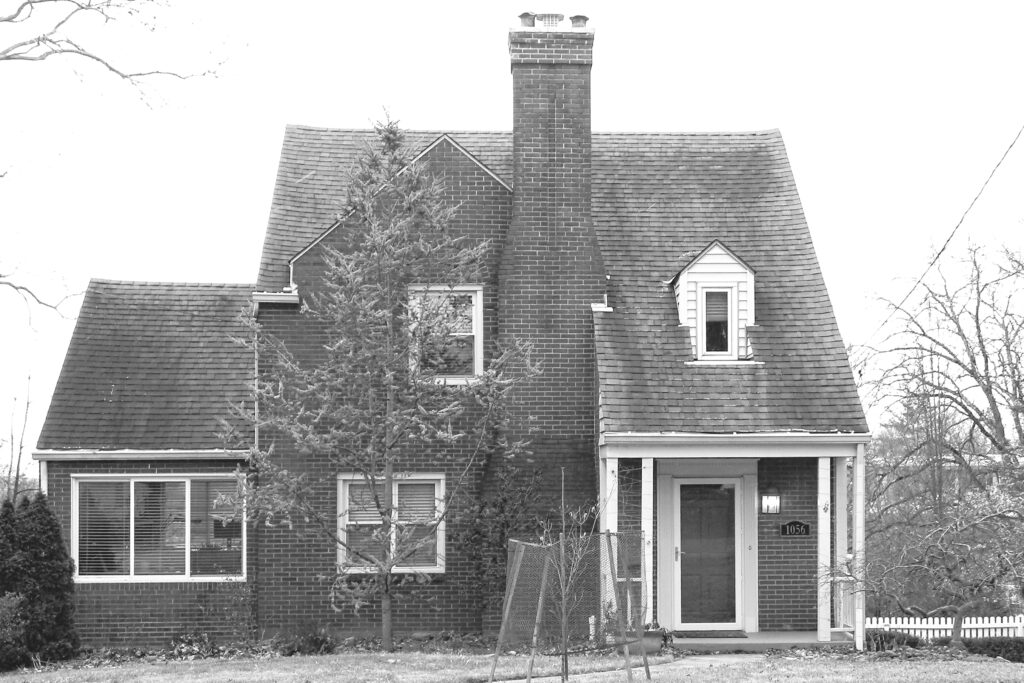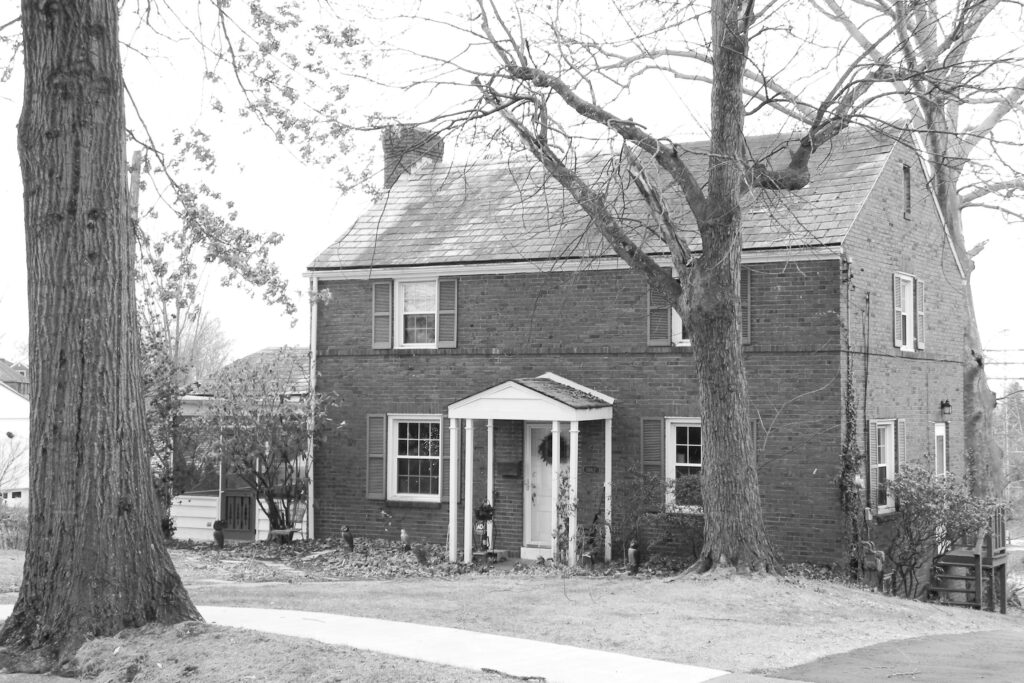
At the turn of the twentieth century, the Strip was a chaotic and lively mess of huge industries, small business, and rowhouses. Few of the houses remain; here is one of the surviving rows. These are what old Pa Pitt calls Baltimore-style rowhouses: a row where the houses are all put up as more or less one building, flush up against the sidewalk, with only a set of steps to the front door to separate them from the city outside. These were built as rental houses, probably in the 1890s or very early 1900s; they were still all under the same ownership in 1923, according to old maps. At first they had small back yards on the alley in the rear, but by 1910 those back yards had been filled in with tiny alley houses, which are still there today, and some day when it isn’t so cold old Pa Pitt will walk around to the alley and get their picture, too.

Surprisingly, all the houses in the original group survive. The house on the right end had its front completely rebuilt about ten years ago; the fourth house from the left has had a “picture window” installed in the parlor. The rest of the houses look more or less the way they have always looked.

Comments

